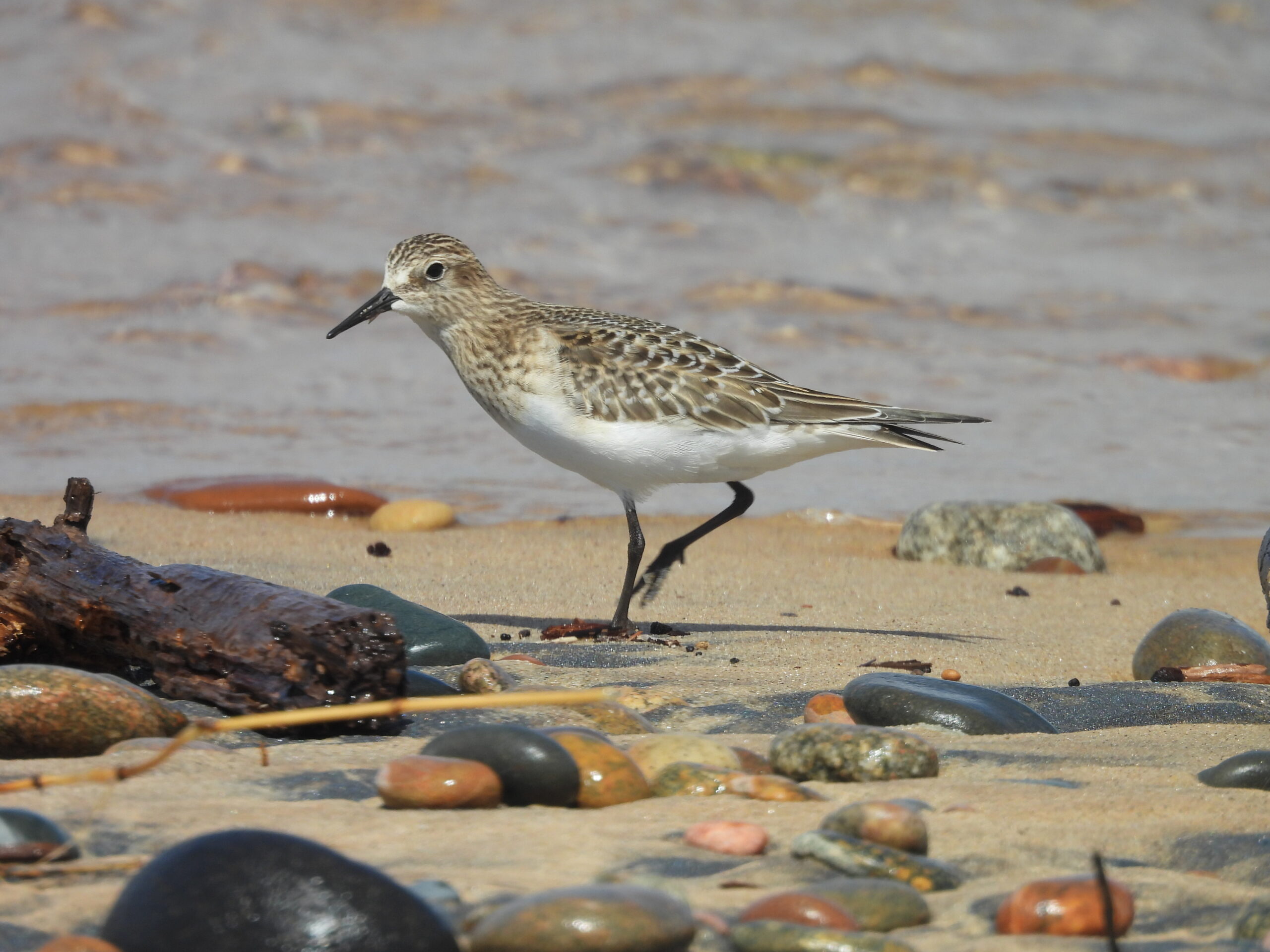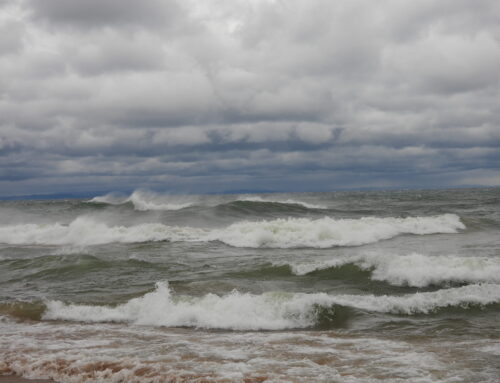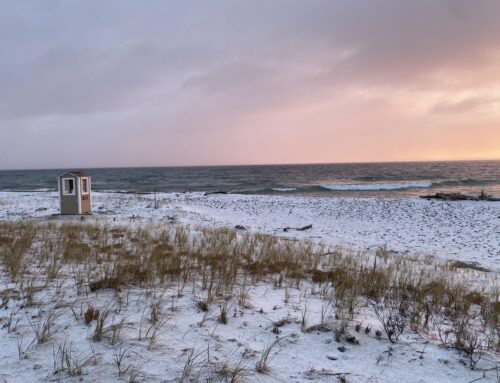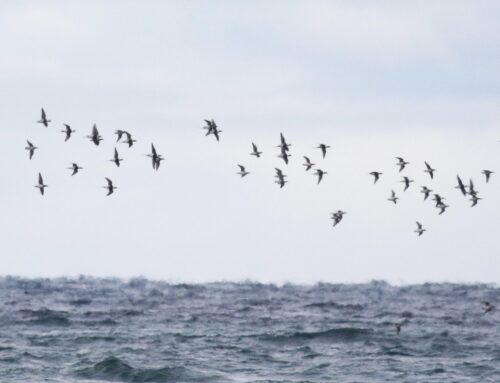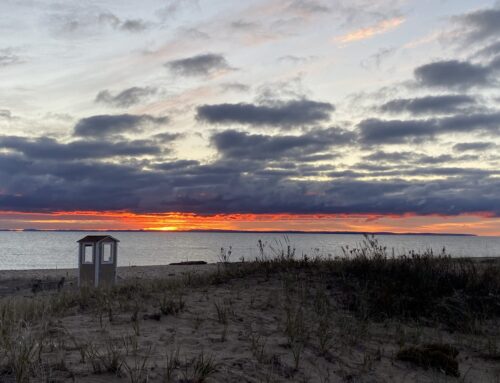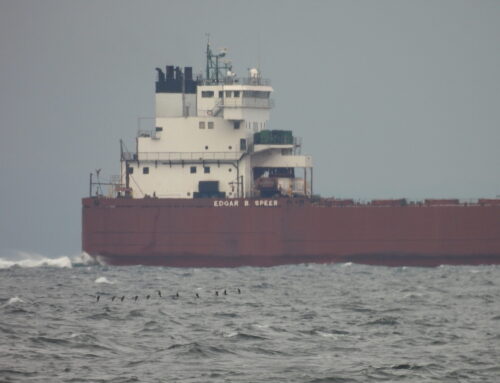The fall count has just begun, but already this week has produced what is sure to be one of the most memorable days of the season. It was one of those days at Whitefish Point where there are birds everywhere you look. There were thousands of waterbirds zipping by, the flight calls of warblers darting in off the lake, and a growing kettle of raptors circling overhead.
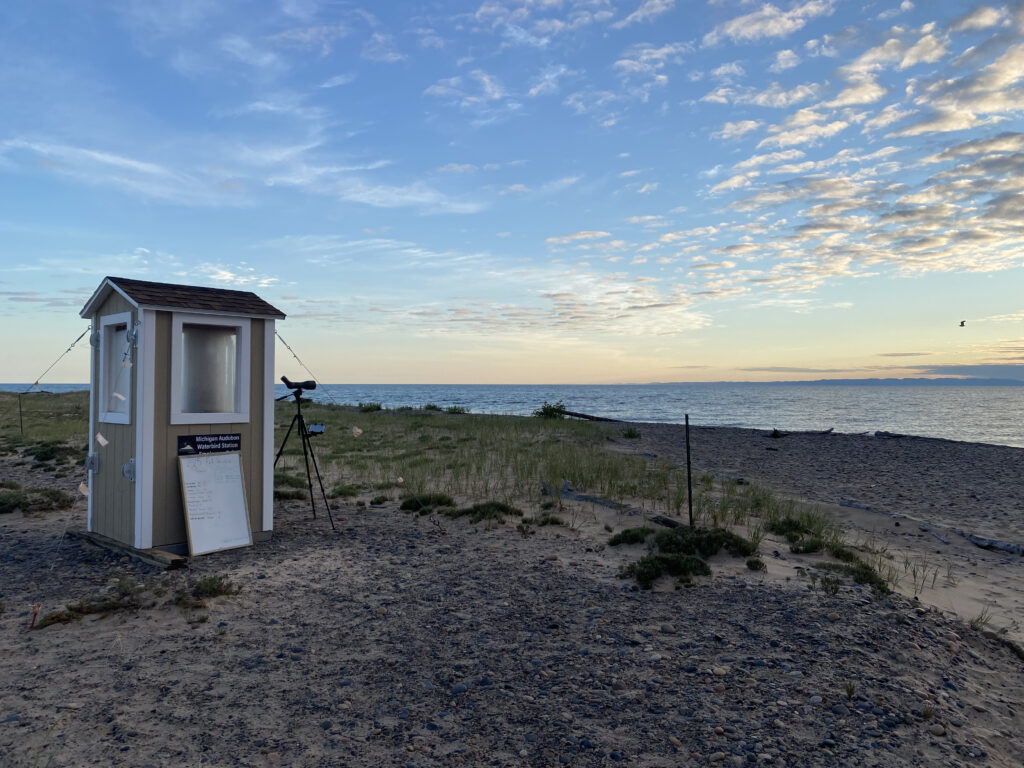
Waterbird Shack. Photo by Frank Fabbro
The week started out with a couple of fairly slow days of counting. Lots of birders might be familiar with the routine of repeatedly checking weather forecasts before a day in the field. During fall migration, this becomes especially important as pushes of migrating waterbirds are often closely associated with ‘cold fronts’ and the northerly winds that can follow as low-pressure storm systems move through our area. Of course sometimes the weather shows up and the birds don’t, but this is still important data! With the close relationship between weather conditions, bird movements, and the detectability of migrating birds, we record weather data each hour during the count (visibility, wind speed, direction, temperature, air pressure, etc.). Weather data on August 22 revealed continuously dropping air pressure along with a few interesting waterbirds including our first Red-throated Loons of the season and a lone Black Tern. By sunset the low pressure system had set in with storms and rain covering the point.
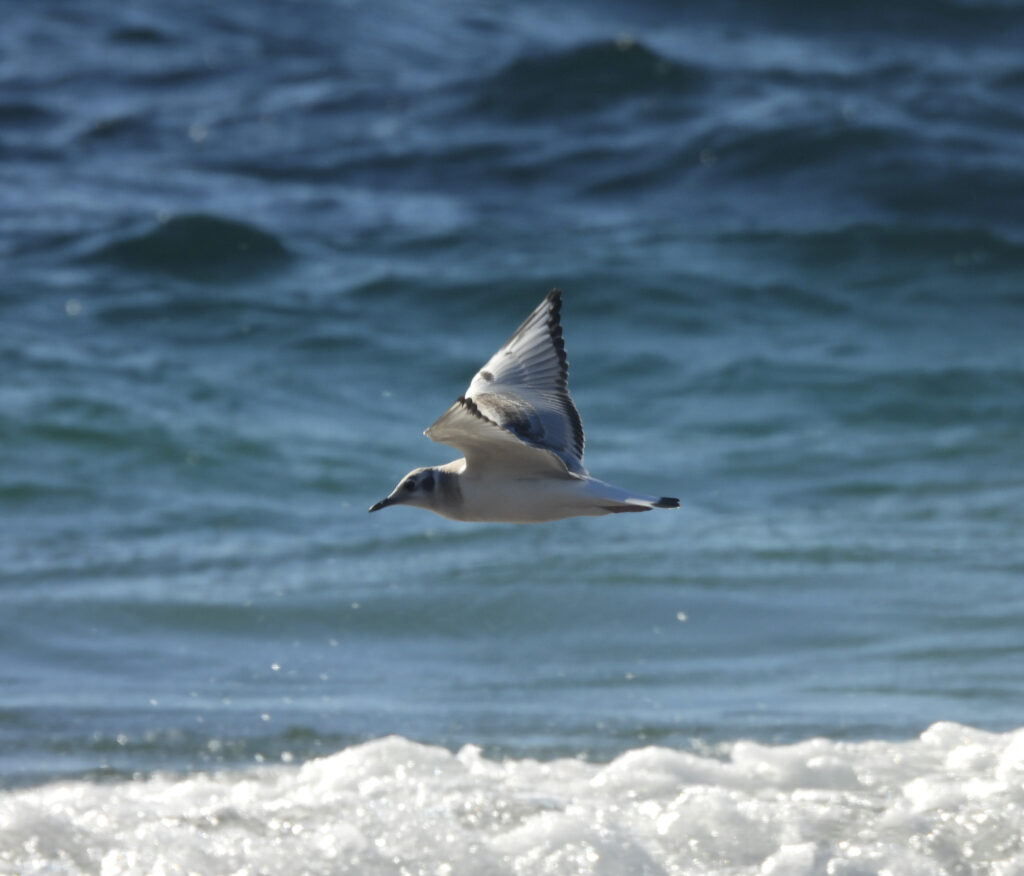
Juvenile Bonaparte’s Gull. Photo by Frank Fabbro
At sunrise on the 23rd the rain had stopped and birds were on the move. I talked a bit about Red-necked Grebe flights in my last post and today was a record-breaking day. During the official 8-hour count period, I tallied 3,258 Red-necked Grebes flying past the point. Some birds passed as singles or in pairs while others moved in large flocks of 20-40 birds. It’s hard to pull yourself away from such a river of birds when the count is over…so we didn’t! Clay, Skye Haas (a veteran counter here), and I kept watch over the movement until it became too dark to see in the evening. We ended the day with a staggering total of 6,609 Red-necked Grebes with the flight really picking up again in the last 90 minutes of daylight.
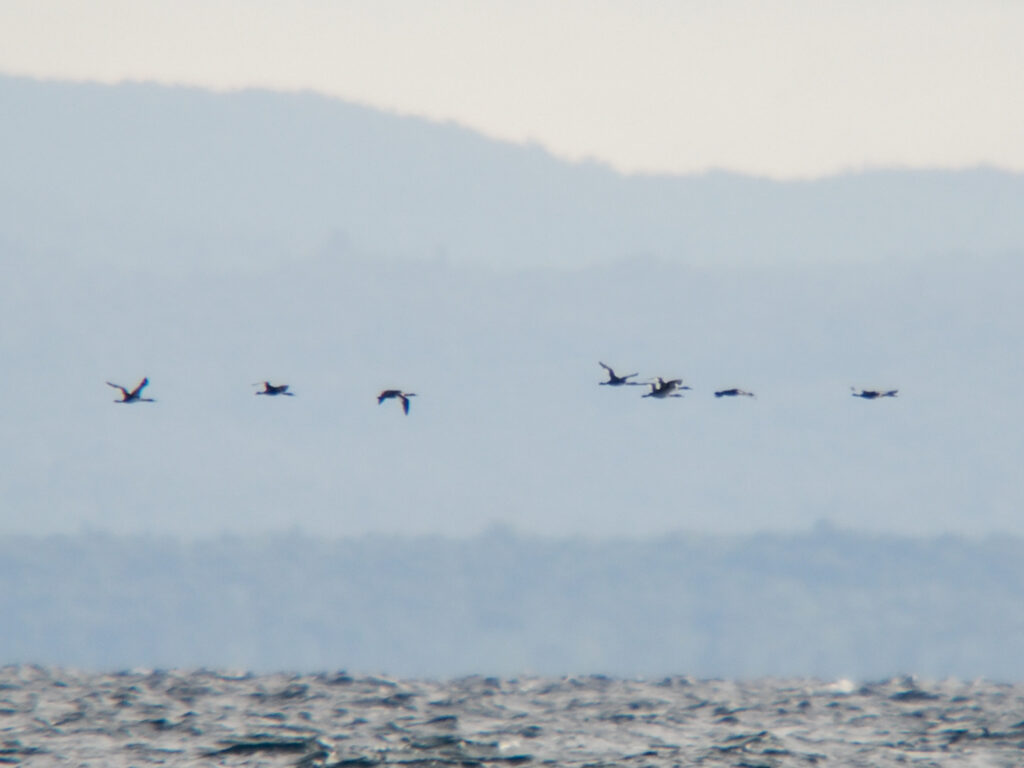
Red-necked Grebes. Photo by Clay Bliznick
It’s common to observe other waterbird species mixed into the lines of migrating grebes. Early in the season duck diversity can be low and dominated by Blue-winged Teal (193 birds observed on 8/23) but we did have our first signs of the more diverse dabbling duck movements to come with the first of season Northern Pintail, American Wigeon, and American Black Duck. Other waterbird highlights from the day included two different Whimbrel (a scarce fall migrant at the point), 4 Black Terns, and an American White Pelican. The pelican is an uncommon bird here in the fall and this individual bobbed around just off the beach for much of the afternoon. Many of the passing beachgoers were delighted by its immense black and white wingspan. We got to see the bird again on August 24 as it roosted among the gulls and cormorants at the harbor.
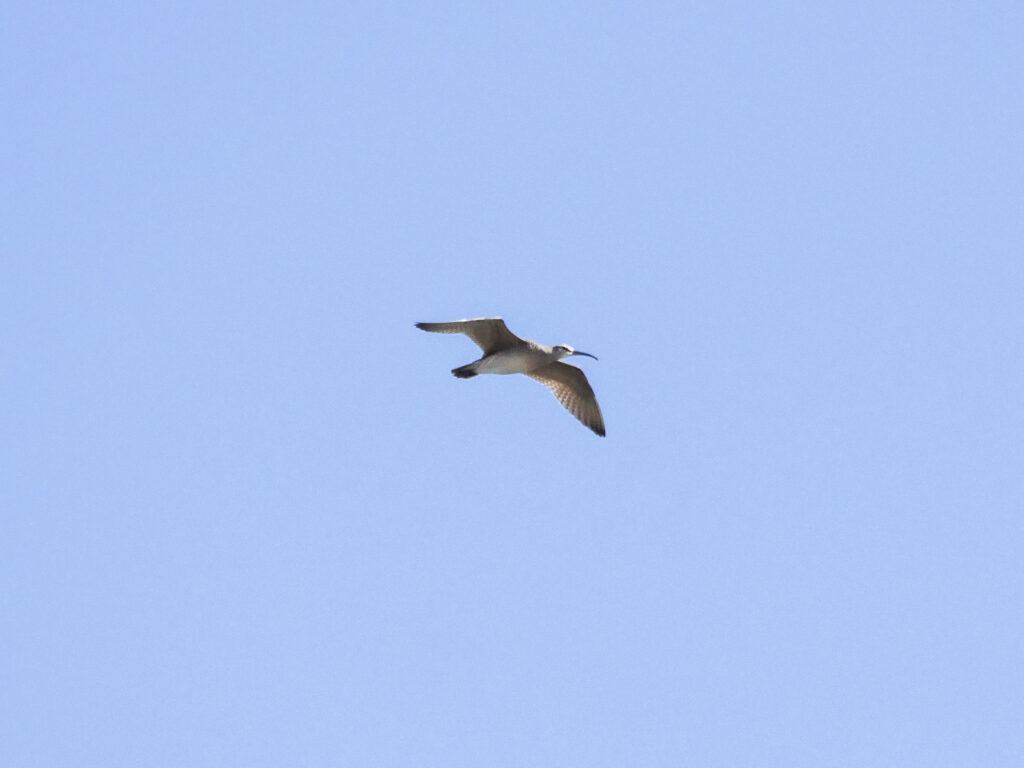
Whimbrel. Photo by Clay Bliznick
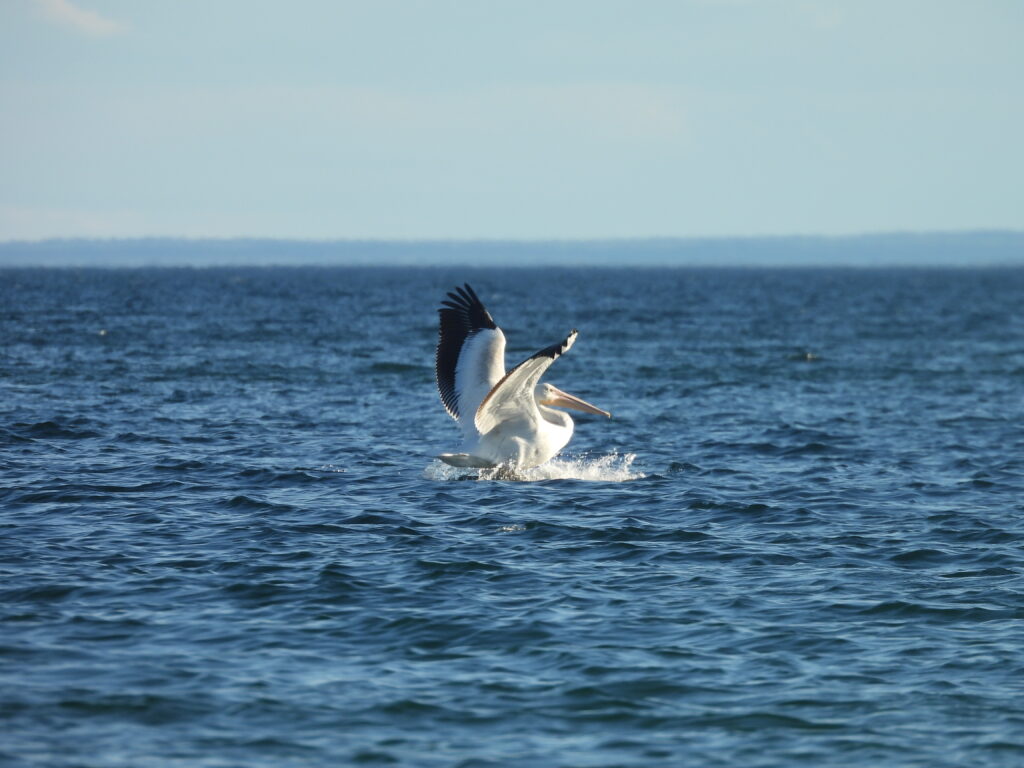
American White Pelican. Photo by Frank Fabbro
The next three days of the count produced more strong north and westerly winds. The flights of waterbirds were not as strong as on the 23rd but the grebes continued to pass and jaeger numbers had a substantial increase. We recorded 6 individuals during the count this week with one bird passing close enough for Clay to identify it as a juvenile Parasitic Jaeger. On the 24th we also had an impressive showing of large shorebirds with flocks of Whimbrel and Hudsonian Godwits zipping high over the lake in active migration. Red-breasted Nuthatches continue to grow in number and signs show they might be moving in a big way this fall! We’re looking forward to the start of September and more waterbirds on the move.
~Frank Fabbro, 2025 Fall Waterbird Counter
Featured Photo: Baird’s Sandpiper by Frank Fabbro
You can now see the waterbird count data on Trektellen! Check it out at trektellen.nl/count/view/4209.
You can keep up with the 2025 Fall Waterbird Count by reading Frank’s weekly blog posts and following WPBO’s social media (Facebook, Instagram, and X). The fall waterbird count runs August 15 through November 15.
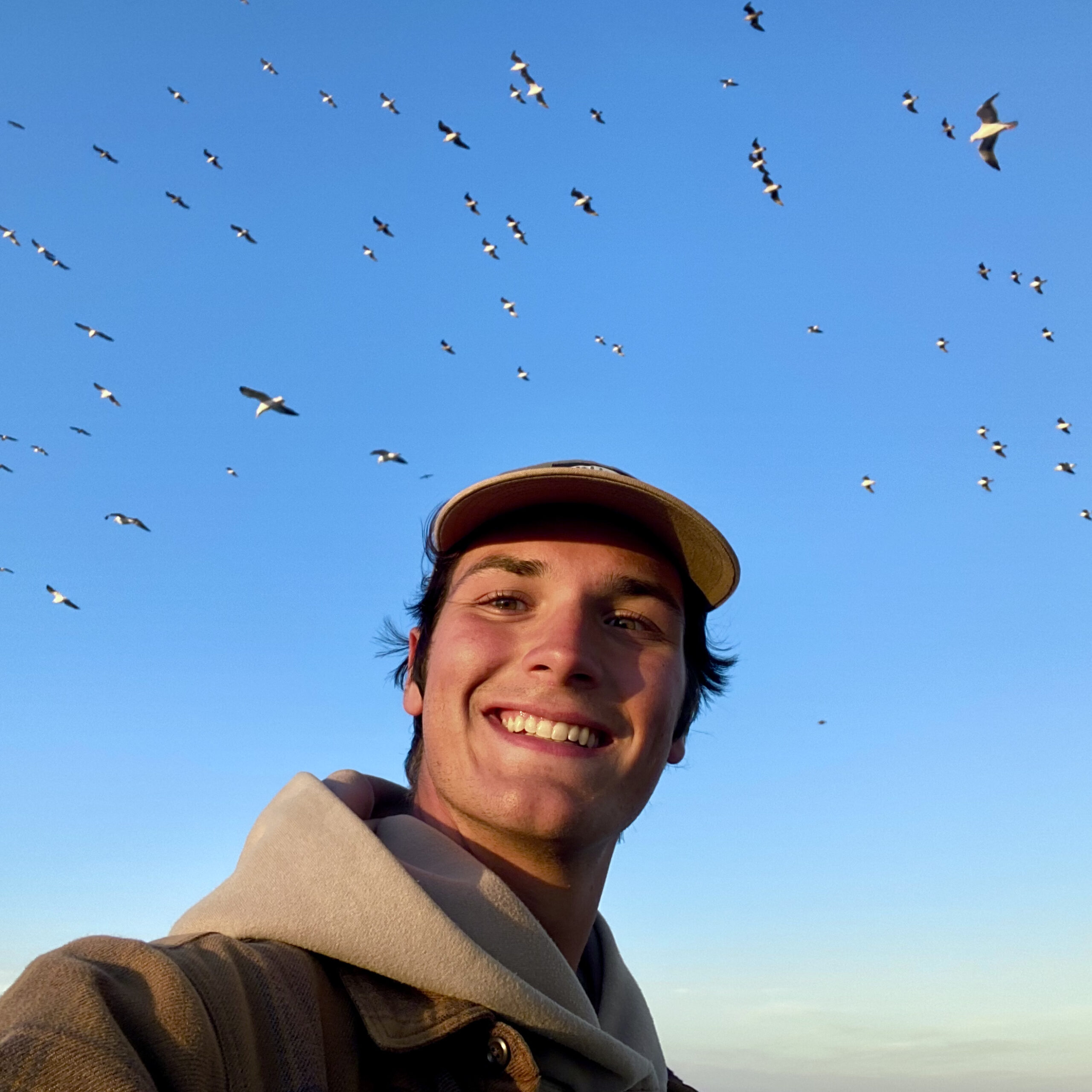
Frank Fabbro: 2025 Fall Waterbird Counter
Frank is an avid birder who was first introduced to the spectacle of bird migration along the Mississippi Flyway in his home state of Minnesota ten years ago. Since then, he has pursued his passion for birds, and the amazing places they inhabit, across the country and around the world. He studied Wildlife Biology and Landscape Restoration at the University of California, Davis, and since graduating has worked on a variety of bird-related projects, ranging from Spotted Owl surveys to prairie-chicken tagging and counting migrating seabirds. He’s excited to be back in the Northwoods, once again experiencing the excitement of fall migration along the shores of Lake Superior.

